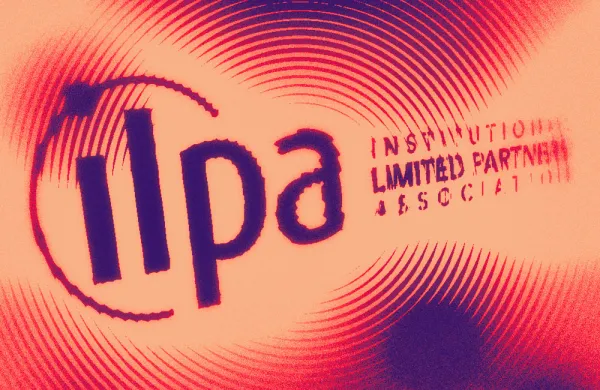Liquidity management for institutional investors — and, to some extent, retail investors — took center stage as a strategy following the financial crisis. In the midst of the crisis, institutional investors had problems accessing their alternative investments, which were largely in hedge funds.
But as the financial crisis abates, a so-called rerisking has been taking place. Investors are now looking for alternatives that provide upside growth but also provide more liquidity than traditional hedge funds. Many of those investments are in the form of liquid alternatives, which are often packaged as mutual funds. According to a Goldman Sachs report titled “Retail Liquid Alternatives: The Next Frontier” released in December, “Real liquid alternatives are in the early stages of a five- to ten-year growth trend, generating 15 percent to 20 percent organic growth annually, capable of producing a $2 trillion assets under management opportunity — reminiscent of early-stage ETF growth.”
The rise in their popularity, according to Brian Haskin, founder and chief executive officer of Los Angeles research and investment consulting firm Alternative Strategy Partners, stems not only from the financial crisis but also from the desire for high-quality liquid investments, greater interest from investment consultants and the slow emergence of more products. “Institutional investors are now saying, ‘I like hedge funds, I like alternative investments, but I need at least some of those assets to be more liquid,’” he says.
According to Alan Lenahan, director of hedged strategies with Fund Evaluation Group in Cincinnati, liquid alternatives have grown as fixed-income products have fallen out of favor. The numbers, he says, are still quite small in comparison to total hedge fund assets under management. “But what has attracted people’s attention is the concept of getting similar exposure to what hedge funds provide and better transparency, more regulation and lower fees,” Lenahan says. As institutional investment committees look at the options, he adds, the triple threat of lower fees, liquidity and transparency makes liquid alternative–based mutual funds very appealing.
One example of that trend was the decision late last year by Connecticut health systems network Hartford HealthCare (HHC), which provides its more than 18,000 employees a defined contribution system; its 401(k), 403(b) and 457(b) plans have total assets of roughly $650 million. Within that retirement system, Hartford offers a Neuberger Berman multimanager fund as a plan option. When it was rolled out, HHC was among the first major not-for-profit institutions to introduce hedge funds in a mutual fund format to employees.
Institutional and retail investors clearly have different needs. Simple Alternatives, an institutional alternative investment management firm based in Ridgefield, Connecticut, offers a hedge fund strategy in a mutual fund to institutional investors without watering it down, as do many retail products, notes James Dilworth, the firm’s founder and chief executive officer. He says fund-of-fund managers will typically look for cheaper alternatives from hedge fund managers that offer long-book strategies, hedged long-book strategies and possibly ETFs.
“It’s not an apples-to-apples strategy that you are getting from hedge fund managers, because then they would risk cannibalizing their core business where their clients are paying them a premium,” he says. “Usually, that premium comes in the form of the short book or individual securities.”
He says the tide turned during the first quarter of 2013, when the firm began getting calls from institutional clients. “They were reticent to buy in on it because they thought it was too good to be true. But as it has evolved, there has been validation that they are getting a real hedge fund portfolio in a liquid alternative,” he says.
Still, fees continue to be an issue for plan sponsors whose memories of the financial crisis still tell them to retain capital. The debate has become public in states like South Carolina, where the state treasurer has called on pension administrators to reevaluate their investment partnerships.
“It depends on where the adviser is coming from, where the pension is coming from and what perspective the end investor has,” says Alternative Strategy Partners’ Haskin. For plan sponsors used to paying hedge funds the traditional two and 20, fees are not an issue, he notes. To these investment committees and boards, the mutual fund options seem like a good deal. For those not used to a hedge fund strategy, however, fees will appear high.
Lenahan agrees and says that from the institutional point of view, the funds are a huge discount. “At the end of the day, mutual funds are lower cost because the management fee is being reduced,” he says.
One of the issues plaguing liquid alternatives is what the authors of the Goldman Sachs report call “the distribution channel knowledge gap.” According to the report, 80 percent of mutual fund sales are directed by advisers who suggest that intermediary education is necessary before the funds gain more momentum. Goldman suggests that wire houses and registered investment advisers offer plenty of opportunity for the liquid alt market.
Goldman also notes a study published in October by the U.S. Treasury Department’s Office of Financial Research on potential systemic risks in asset management, which cited the rising number of mutual funds introduced by hedge fund and private equity managers that use alternative strategies.
According to the Goldman report, increased attention to liquid alt–backed mutual funds could lead to more stringent requirements on reporting and on what can be held in such funds. Such restrictions would in turn result in a lag of new products and possibly lower returns.
Simple Alternatives’ Dilworth says the liquid alternative mutual fund option works in different ways for different investors. It may be a stand-alone fund, as is the case for Hartford HealthCare, or it could be part of a larger life-cycle set of offerings, for which Simple Alternatives recently won a mandate. “We are just one of the tools in the toolshed,” he says. “We will not be all things to all people.”






